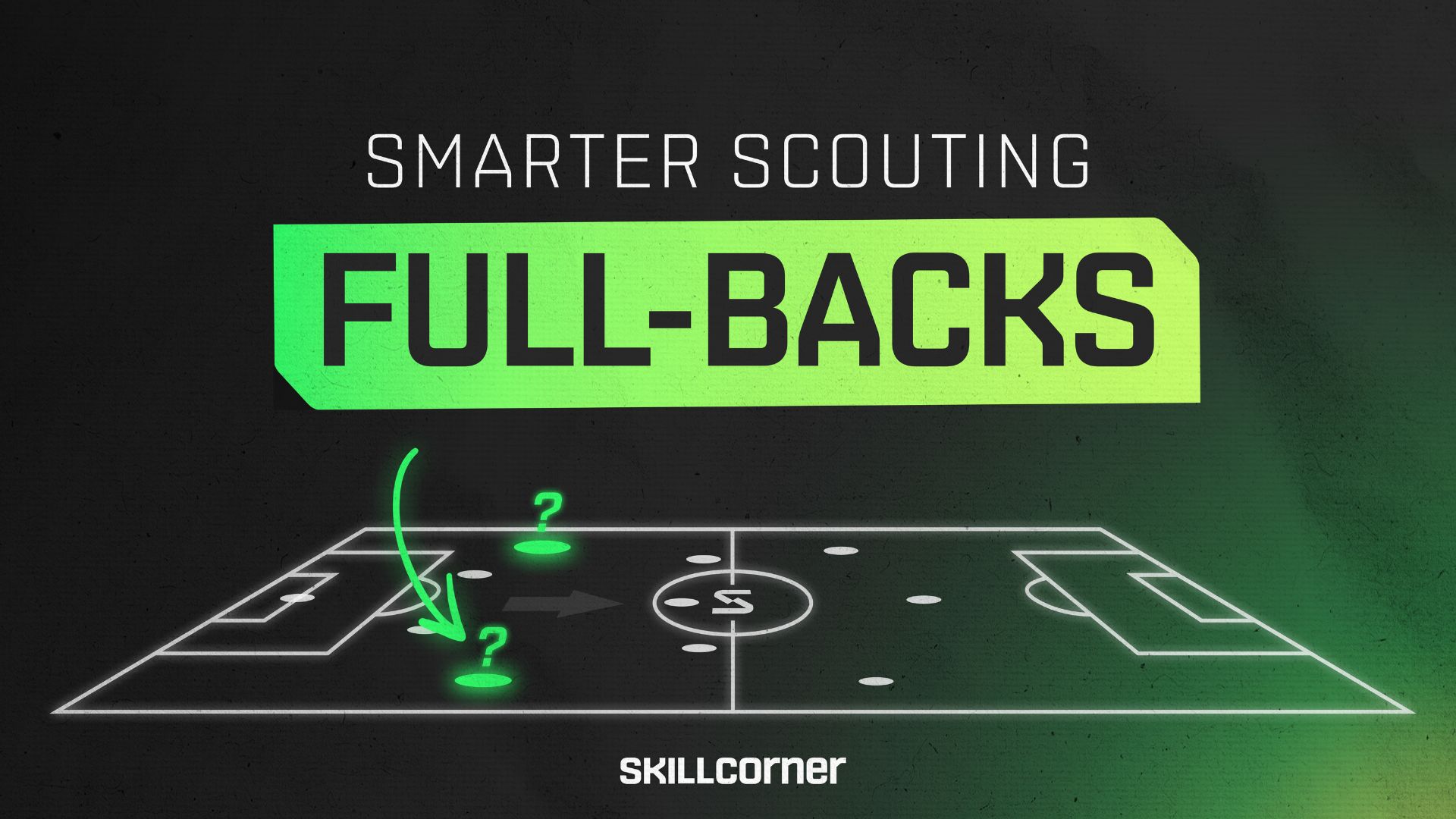Smarter Scouting - Profiling Players Beyond the Position Group: Full-backs
Welcome to our mini-video series “Smarter Scouting.”

Modern football has evolved from defined positions to functions and principles players perform within different tactical systems. Smarter Scouting is a new video series that explores how clubs can use advanced data to easily identify player profiles that go beyond traditional position labels.
In each episode, we highlight a position group and uncover the key archetypes that exist within it - combining physical, technical, tactical, and contextual insights to show how data brings clarity to complex roles.
In our first episode, we turn the spotlight on the modern full-back - comparing two distinct yet increasingly common profiles: the Intense Full-Back and the Inverted Full-Back. We’ll show what differentiates them, and how SkillCorner data makes it easy to find players who fit each archetype.
The Intense Full-Back
A strong athlete, tireless runner, who constantly provides solutions for his teammates by lapping and filling the spaces forward. Attempting to serve bodies in the box, the Intense Full-back is committed out of possession when the game requires to track opponents back.
To quantify and evaluate the various functions and behaviours, we used the following metrics belonging to our Physical and Game Intelligence data:
- High Intensity Distance (P90): average distance covered per match at speeds exceeding 20 km/h.
- Overlap Runs (P30 TIP): number of overlaps provided by the player.
- Runs Ahead of the Ball (P30 TIP): number of runs by the player in front of the ball-carrier, without attacking the space behind the last line of defense.
- Pass Attempts to Cross Receiver Runs (P30 TIP): number of times a player attempts a pass to a teammate making a run to receive a cross.
- Recovery Press Engagements (P30 OTIP): number of times a defender runs backward to apply pressure to the ball-carrier. Typically occurring during defensive transitions.
The Inverted Full-Back
Aims to receive beyond the first line of pressure, within the opposition’s defensive shape, and attempts to break the defending midfield with key passes. The Inverted Full-Back is heavily involved against mid-blocks, capable of playing on the turn, well-positioned and committed to defending transitions.
Relevant metrics:
- Passing Options Through First Line (P30 TIP): occurrences of the player moving to receive a pass - opening a passing lane for the ball-carrier and bypassing the opponent’s first line of pressure from the inside.
- Pass Attempts Through Second Last Line (P30 TIP): number of times a player attempts a pass to a teammate positioned beyond the second-last line of pressure, typically the midfield.
- Possession in Create (P30 TIP): number of possessions in the Create phase - typically occurring in the middle third of the pitch, characterized by a methodical and structured approach to possession and by relative pressure from the opponent.
- Forward Momentum (P30 TIP): number of times a player receives a pass, either forward or sideways, turns under pressure, and performs a progressive action.
- On-Ball Engagements in Transition (P30 OTIP): how often the player engages the ball-carrier in defensive transitions, shaping their actions through active pressing, challenges, or by controlling and containing their movement.
Normalization methods:
- P90: average per 90 minutes - highlights what a player would achieve if they played a full match, allowing fair comparison across players with different playing times.
- P30 TIP: per 30 Minutes Time in Possession - shows performance as if every player had the same 30 minutes of team possession within the single game.
It levels the playing field, so you can compare players fairly even if some teams are more or less dominant. - P30 OTIP: per 30 Minutes Time out of Possession - reveals performance as if every player experienced the same 30 minutes without the ball during matches.
It makes comparisons fair, so you can evaluate players even if some spend more or less time defending.

